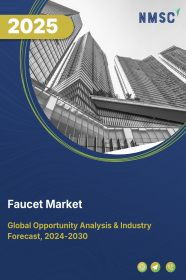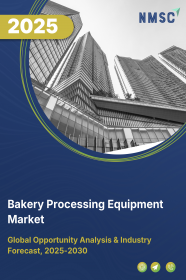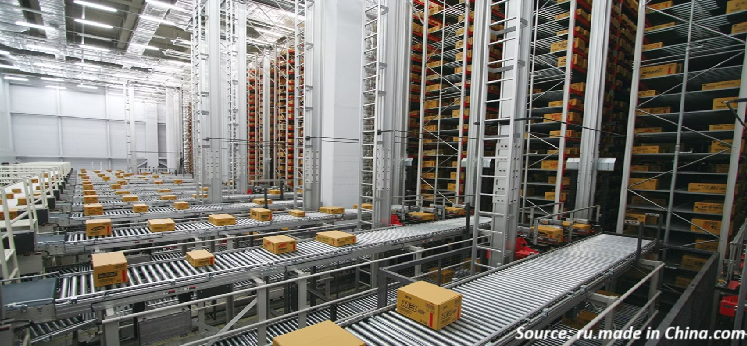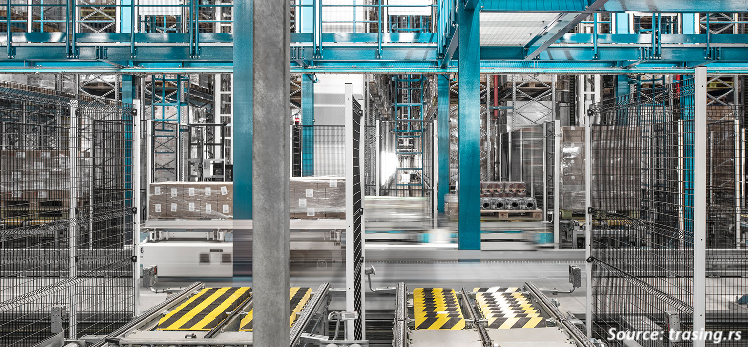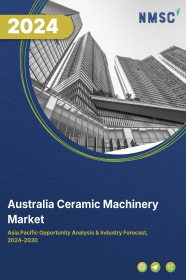
Australia Ceramic Machinery Market by Type (Shaping Machines, Decorative and Glazing Machines, Kilns and Firing Machines, Raw Material Processing Machines, Storage and Handling Machines, and Others Machinery), by Product Type (Tile, Sanitary Ware, Tableware, Technical Ceramics, Refractories, and Abrasive), and by End User (Construction, Automotive, Electronics, and Others) – Global Opportunity Analysis and Industry Forecast, 2024–2030
Industry: Construction & Manufacturing | Publish Date: 16-Oct-2024 | No of Pages: 79 | No. of Tables: 49 | No. of Figures: 34 | Format: PDF | Report Code : CM2790
Australia Ceramic Machinery Market Overview
The Australia Ceramic Machinery Market size was valued at USD 45.4 million in 2023, and is predicted to reach USD 64.8 million by 2030, at a CAGR of 4.8% from 2024 to 2030.
The ceramic machinery industry, also known as the ceramic manufacturing equipment industry, involves the global sector that designs, produces, and distributes machinery for making ceramic products such as tiles, sanitary ware, tableware, and advanced ceramics. This market includes equipment like crushers, grinding mills, kilns, dryers, and presses, used throughout the ceramic production process, from raw material preparation to the final product.
Ceramic manufacturing equipment offers high precision for shaping, glazing, and producing ceramics, resulting in consistent product quality, faster production, and lower labor costs. It is essential for meeting the growing need for quality ceramics, supported by advancements in manufacturing technology and increased automation investments.
Urbanization Drives Demand for Ceramic Machinery in Australia
The surge in urbanization across Australia significantly boosts the demand for ceramic machinery, as expanding urban areas accelerate the need for construction and infrastructure development.
As cities grow, the demand for ceramic products such as tiles, sanitaryware, and decorative materials rises, necessitating advanced machinery to meet modern design and quality standards.
According to the Central Intelligence Agency (CIA), approximately 86.6% of Australia's population lived in urban areas in 2023. This rapid urban expansion propels the ceramic machinery market by increasing the production needs of the construction and renovation sectors.
Ceramic Export Growth Fuels Demand for Advanced Ceramic Machinery in Australia
The substantial growth in ceramic exports from Australia further drives the demand for advanced ceramic machinery. As international demand for ceramic wares increases, manufacturers must enhance their production capacities and technological capabilities to meet global quality standards and large-scale output requirements.
Ceramic manufacturing equipment plays a crucial role in mass-producing ceramics with improved durability and complex designs, essential for competing in global markets. The World Integrated Trade Solution reports that Australia exported ceramic wares for laboratory, chemical, or other technical uses valued at USD 144,050 in 2023. This growth in export activity highlights the need for sophisticated machinery to handle increased production demands while maintaining high international standards.
High Initial Investment Hindering Growth of the Ceramic Machinery Market
A significant challenge for the Australia ceramic machinery market growth is the high initial investment needed for advanced equipment. This substantial financial requirement creates a major barrier, particularly for smaller companies and startups, hindering their ability to invest in the latest technologies.
The large capital needed to purchase and install sophisticated machinery limits these businesses from upgrading their operations or expanding their capabilities. As a result, this financial constraint impedes the overall market growth by restricting many manufacturers from adopting new, more efficient production technologies that could advance the industry.
Integration of Inkjet Technology in Ceramic Machinery Creates Future Opportunities
The integration of inkjet technology into ceramic manufacturing equipment offers a valuable growth opportunity for the Australia ceramic machinery market trends. This technology allows for high-resolution, customizable printing directly on ceramic surfaces, creating intricate designs, vibrant colors, and detailed patterns. It meets the increasing demand for personalized and aesthetically appealing ceramics.
Additionally, inkjet technology improves production efficiency by reducing reliance on traditional, labor-intensive methods, thus lowering costs and enhancing manufacturing processes.
This advancement not only provides a competitive edge but also opens up new growth opportunities within the Australia ceramic machinery market expansion, making it a key investment for future development and innovation.
Competitive Landscape
Several market players operating in the Australia ceramic machinery industry include Ceramix Australia, KEDA Industrial Group Co., Ltd., HANDLE GmbH Maschinen und Anlagenbau, Breton S.p.A., SACMI, and others.
Australia Ceramic Machinery Market Key Segments
By Type
-
Shaping Machines
-
Decorative and Glazing Machines
-
Kilns and Firing Machines
-
Raw Material Processing Machines
-
Storage and Handling Machines
-
Others Machinery
By Product Type
-
Tile
-
Sanitary Ware
-
Tableware
-
Technical Ceramics
-
Refractories
-
Abrasive
By End User
-
Construction
-
Automotive
-
Electronics
-
Others
Key Players
-
Ceramix Australia
-
KEDA Industrial Group Co., Ltd.
-
HANDLE GmbH Maschinen und Anlagenbau
-
Breton S.p.A.
-
SACMI
-
Others
REPORT SCOPE AND SEGMENTATION:
|
Parameters |
Details |
|
Market Size in 2023 |
USD 45.4 Million |
|
Revenue Forecast in 2030 |
USD 64.8 Million |
|
Growth Rate |
CAGR of 4.8% from 2024 to 2030 |
|
Analysis Period |
2023–2030 |
|
Base Year Considered |
2023 |
|
Forecast Period |
2024–2030 |
|
Market Size Estimation |
Million (USD) |
|
Growth Factors |
|
|
Companies Profiled |
10 |
|
Market Share |
Available for 10 companies |
|
Customization Scope |
Free customization (equivalent up to 80 working hours of analysts) after purchase. Addition or alteration to country, regional, and segment scope. |
|
Pricing and Purchase Options |
Avail customized purchase options to meet your exact research needs. |

















 Speak to Our Analyst
Speak to Our Analyst



